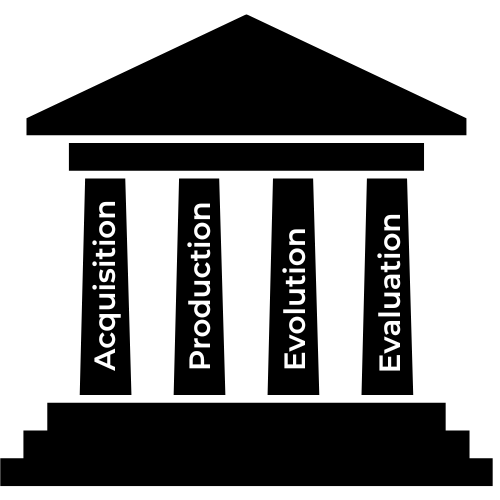ToK Exhibition Prompt 25: Distinguish knowledge, belief & opinion
I’ve been working with students from around the world on their Theory of Knowledge (ToK) Exhibitions. One prompt that keeps coming up is Prompt 25: “How can we distinguish between knowledge, belief and opinion?” It’s an engaging question — but many students approach it in ways that limit their marks.
So in this blogpost, I’m going to show you how to go beyond the basics, strengthen your arguments, and create a compelling Exhibition that responds directly to this prompt.
The Common Approach (and Why It Falls Short)
Most students start by defining the terms knowledge, belief and opinion, then choose three objects that they think illustrate those definitions.
For example:
They might define knowledge and choose an object to illustrate that definition.
Then they do the same for belief and opinion.
Whilst this might earn you 3–4 out of 10, it’s a weak strategy. Why? Because it doesn’t really answer the prompt. The prompt asks how can we tell the difference between them — not simply what are they?
Think about it like this: If the question were “How can you distinguish between a strawberry, an aeroplane and your maths teacher?”, it wouldn’t be enough to describe a strawberry. You’d need to compare them to show how they differ. The same applies to knowledge, belief and opinion — you need comparative analysis.
A bit of comparison might push you up to 5–6 marks. But if you want to go further — and get into the higher marking bands — you’ll need a more ToK-savvy approach.
A Stronger Strategy: Use the 4 Pillars of ToK
To do better, think about the 4 Pillars of ToK:
These provide a framework to help you go beyond definitions. Ask yourself:
How was this idea constructed?
Who produced it, and for what purpose?
How do we evaluate it as knowledge, belief or opinion?
How might our classification of it evolve over time?
These sorts of questions help you to develop robust knowledge arguments, which is exactly what examiners are looking for.
Start With Arguments — Not Objects
One of my most important tips: develop your knowledge arguments before choosing your objects.
Although this is opposite to the IB recommendation, it’s a proven method for reaching the higher marking bands. If you’d like more on that, check out the blogpost linked here
Let’s look at the three knowledge arguments I’ve developed for this prompt — along with objects to illustrate each. Remember, these are just examples included here to give you an idea of the sort of knowledge arguments that you can develop yourself.
Knowledge Argument 1:
“The way in which an idea is constructed is a means by which we can distinguish between knowledge, belief and opinion.”
I’m using the term idea here to mean a cognitive claim — before we decide whether it’s knowledge, belief or opinion.
Object 1:The Salvator Mundi (Painting)
Make it stand out
For centuries, Salvator Mundi was believed to be painted by a follower of Leonardo da Vinci. In 2005, scientific and art historical analysis reclassified it as an authentic da Vinci work. This shift — from belief to knowledge — happened because of how the idea was constructed. The techniques used in the painting, and the evidence used to support the claim, allowed us to reclassify it as knowledge.
Knowledge Argument 2:
“The ways in which an idea is used is a means by which we can distinguish between knowledge, belief and opinion.”
This time, I’m thinking about how we treat and apply ideas depending on their classification.
Object 2:JSTOR Academic Database
When writing your Extended Essay, you’re taught to reference appropriately. Why? Because academic systems treat knowledge differently from belief and opinion. JSTOR provides a platform for peer-reviewed research, and teaches students to use knowledge responsibly — not as personal opinion, but as shared, evaluated academic content. Referencing helps distinguish between claims that are believed, those that are opinion-based, and those we can treat as knowledge.
Knowledge Argument 3:
“The application of existing knowledge frameworks is a means by which we can distinguish between knowledge, belief and opinion.”
This argument focuses on how we evaluate ideas using the tools and methods from different Areas of Knowledge.
Object 3:Freakonomics by Steven Levitt & Stephen Dubner
This popular economics book uses statistical analysis and economic reasoning to explore everyday phenomena. Some claims — like the theory that teachers may cheat to improve test scores — are backed by statistical evidence, suggesting they can be treated as knowledge. However, many of the book’s conclusions remain open to interpretation, depending on how we apply different frameworks.
So this object illustrates how the same idea can be classified as knowledge, belief or opinion, depending on which frameworks we apply. It highlights that distinguishing between them isn’t always straightforward.
Final Tips for Writing Your Exhibition
Once you’ve developed your knowledge arguments and chosen your objects, it’s time to structure your response according to the Exhibition format. Make sure each object clearly supports the argument it’s tied to, and that you’re using your analysis to compare and distinguish between knowledge, belief and opinion — not just to define them.
If you want more help with how to write up your Exhibition, check out the guides and examples on the ToKToday YouTube channel or get in touch for one-on-one support.
You can also pick up the e-book Every ToK Exhibition Prompt Explained from the TokToday shop.
Thanks for reading — and remember:
💡 Arguments before objects.
🧠 Think like a ToK student, not a dictionary.
🚀 Stay ToKTastic, my friends.
For coaching, feedback, or support with your ToK Exhibition, contact me at Daniel@ToKToday.com.








